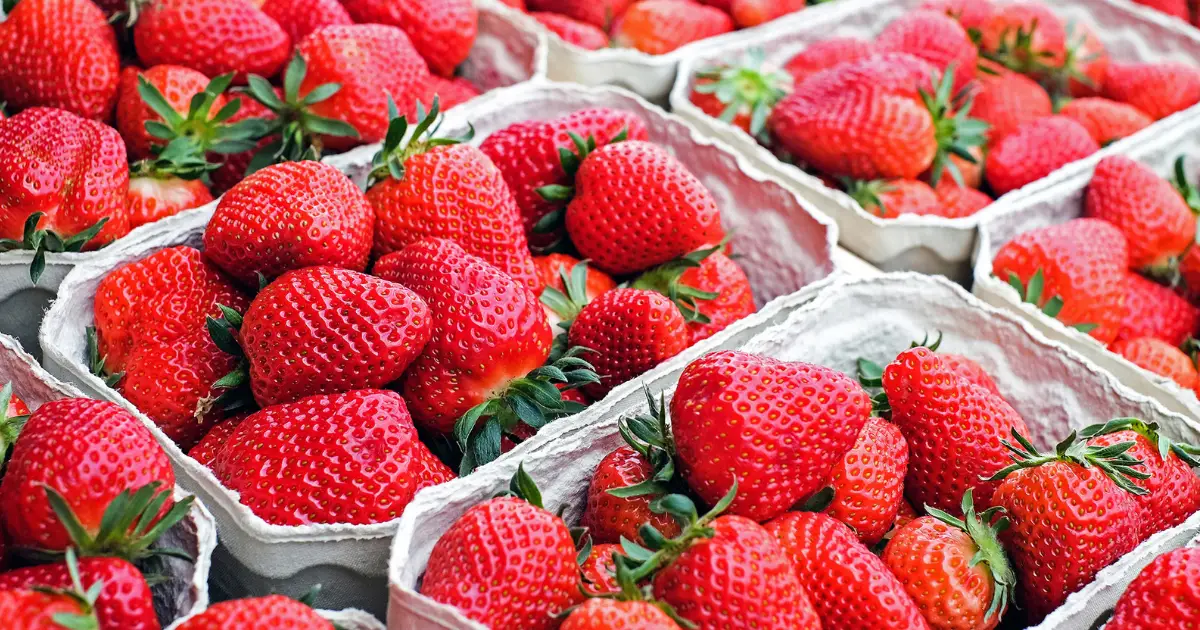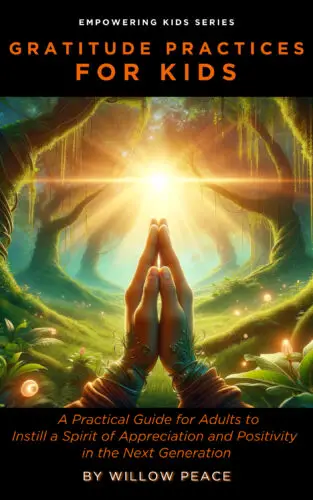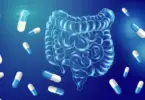June 20th, 2025
Staff Writer for Wake Up World
Imagine biting into a juicy strawberry or crisp apple, savoring nature’s goodness. Now, picture invisible pesticide residues tagging along. The Environmental Working Group’s (EWG) 2025 Shopper’s Guide to Pesticides in Produce shines a light on which fruits and vegetables carry the heaviest pesticide loads (the “Dirty Dozen”) and which are the cleanest (the “Clean Fifteen”). This guide empowers you to make informed choices for your health and the planet. Let’s dive into the 2025 lists, explore the impact of pesticides, and discover practical ways to enjoy produce safely.
What Are the Dirty Dozen and Clean Fifteen?
The EWG’s annual guide, based on USDA testing of over 53,000 nonorganic produce samples, ranks fruits and vegetables by pesticide residue levels [1]. The Dirty Dozen lists the 12 items with the highest pesticide contamination, while the Clean Fifteen highlights those with the least. This isn’t about scaring you away from fruits and veggies—vital for a healthy diet—but about helping you choose wisely to reduce exposure to potentially harmful chemicals [2].
The 2025 Dirty Dozen List
This year’s Dirty Dozen, packed with pesticide residues, includes [1]:
- Spinach – Tops the list with the highest residue by weight.
- Strawberries – A fan favorite, but 96% of samples show multiple pesticides.
- Kale, Collard, and Mustard Greens – Leafy greens with frequent contamination.
- Grapes – High residue levels in 96% of samples.
- Peaches – Soft skins hold onto diverse pesticides.
- Cherries – Over 50 pesticides detected, though fewer per sample.
- Nectarines – Similar to peaches in residue patterns.
- Pears – Consistent pesticide presence.
- Apples – A staple with multiple residues.
- Blackberries – New to the list, with 93% of samples showing residues like cypermethrin, a possible carcinogen.
- Blueberries – High residue frequency.
- Potatoes – Back on the list due to chlorpropham, banned in the EU [3].
Over 90% of these samples tested positive for residues, with most carrying four or more pesticides [1]. Blackberries and potatoes are newcomers, raising concerns about chemicals like chlorpropham, which are applied post-harvest to prevent sprouting [4].
The 2025 Clean Fifteen List
On the brighter side, the Clean Fifteen offers safer conventional choices [1]:
- Pineapples
- Sweet Corn
- Avocados
- Papaya
- Onions
- Frozen Sweet Peas
- Asparagus
- Cabbage
- Watermelon
- Cauliflower
- Bananas
- Mangos
- Carrots
- Mushrooms
- Kiwi
Nearly 60% of these samples had no detectable residues, and only 16% showed two or more pesticides [1]. Thick skins or minimal pesticide use make these items low-risk, even when grown conventionally [5].
Why Pesticides Matter
Pesticides protect crops but can linger on produce, posing health risks. Studies link exposure to neurological issues, cancer, and developmental problems, especially in children [6]. A 2022 meta-analysis found that farmworkers exposed to pesticides faced nearly five times the risk of DNA damage [7]. Children, with developing bodies, are particularly vulnerable, with prenatal exposure tied to birth defects and learning issues [8].
Switching to organic produce can slash pesticide levels in your body. One study showed a 50–95% drop in urinary pesticide markers after just a few days on an organic diet [9]. While the industry argues residues are within safe limits [10], cumulative exposure over time raises concerns, especially for kids [11].
The Controversy Around the Lists
The EWG’s guide sparks debate. Critics like the Alliance for Food and Farming claim it exaggerates risks, citing USDA data showing 99% of residues are below EPA safety thresholds [12]. They worry it discourages produce consumption, especially among low-income families [13]. However, EWG argues that long-term, low-level exposure, particularly to multiple pesticides, isn’t fully addressed by current regulations [1]. Research supports their caution, linking pesticides to chronic health issues [14].
Digging Deeper: Pesticide Testing and Toxicity
The EWG analyzes USDA data, testing produce after washing or peeling to mimic consumer habits [1]. Their 2025 methodology scores items based on:
- Percentage of samples with pesticides.
- Number of pesticides per sample.
- Total pesticide concentration.
- Toxicity relative to animal study harm levels [1].
This approach highlights not just residue presence but potential health impacts. For example, blackberries showed cypermethrin, a possible carcinogen, while potatoes carried chlorpropham, banned in the EU for its risks [3]. Meanwhile, Clean Fifteen items like pineapples benefit from protective skins, reducing residue retention [5].
Benefits of Choosing Wisely
Opting for organic Dirty Dozen items or conventional Clean Fifteen produce can lower your pesticide exposure without breaking the bank. Organic diets reduce health risks and support sustainable farming practices that protect soil and pollinators [15]. Plus, eating more fruits and veggies—organic or not—boosts your intake of vitamins, fiber, and antioxidants, cutting risks of heart disease and obesity [16].
Practical Tips to Reduce Pesticide Exposure
You don’t need to overhaul your diet to eat safer. Here are actionable steps to enjoy produce while minimizing pesticide risks:
- Buy Organic for the Dirty Dozen: Prioritize organic spinach, strawberries, and other listed items, especially for kids or pregnant women.
- Choose Conventional for Clean Fifteen: Save money on pineapples, avocados, and other low-residue items.
- Wash Thoroughly: Rinse produce under running water for 15–20 seconds, scrubbing firm items like potatoes with a brush. Skip soap or bleach, as produce can absorb chemicals [17].
- Peel When Possible: Remove skins from fruits like apples or potatoes to reduce residues, but wash first to avoid transferring contaminants.
- Trim Leafy Greens: Discard outer leaves of kale or lettuce, where pesticides often linger.
- Grow Your Own: Start a small garden for herbs, greens, or berries to control pesticide use.
- Support Local Farmers: Buy from farmers’ markets, where growers often use fewer chemicals, and ask about their practices.
Embrace Informed Eating
The 2025 Dirty Dozen and Clean Fifteen lists are tools to navigate the complex world of produce. Pesticides are a real concern, but so is missing out on the health benefits of fruits and vegetables. By choosing organic where it counts, washing thoroughly, and embracing Clean Fifteen options, you can savor nature’s bounty with confidence. Make small, mindful changes today for a healthier you and a greener planet.
Dropdown – Article References
- EWG’s 2025 Shopper’s Guide to Pesticides in Produce. https://www.ewg.org/foodnews/
- Pesticide Exposure in Children. https://pmc.ncbi.nlm.nih.gov/articles/PMC5813803/
- EU Regulation on Chlorpropham Ban. https://eur-lex.europa.eu/legal-content/EN/TXT/?uri=uriserv:OJ.L_.2019.160.01.0011.01.ENG
- USDA Pesticide Data Program. https://www.ams.usda.gov/datasets/pdp
- EWG’s 2025 Shopper’s Guide Clean Fifteen. https://www.ewg.org/foodnews/clean-fifteen.php
- A Systematic Review of Pesticide Exposure and Health Impacts. https://www.sciencedirect.com/science/article/pii/S2214750024002233
- Impact of Pesticide Exposure. https://pubmed.ncbi.nlm.nih.gov/32598326/
- Protecting Children from Pesticides: Information for Parents. https://www.healthychildren.org/English/safety-prevention/all-around/Pages/Protecting-Children-from-Pesticides-Information-for-Parents.aspx
- Organic Diet Intervention Significantly Reduces Urinary Pesticide Levels. https://www.sciencedirect.com/science/article/pii/S0013935119300246
- Dietary Exposure to Pesticide Residues from Commodities. https://pmc.ncbi.nlm.nih.gov/articles/PMC3135239/
- CDC Report on Pesticide Exposure. https://stacks.cdc.gov/view/cdc/51842
- Alliance for Food and Farming: Dirty Dozen List Critique. https://www.businesswire.com/news/home/20250609940493/en/Alliance-for-Food-and-Farming-Dirty-Dozen-List-Recommendations-Cannot-Be-Substantiated
- EWG’s Dirty Dozen List Discredited by Scientists. https://www.farmprogress.com/vegetables/ewg-s-dirty-dozen-list-once-inflammatory-now-discredited
- Health Effects of Pesticides. https://www.pan-uk.org/health-effects-of-pesticides/
- Strategies for feeding the world more sustainably with organic agriculture https://www.nature.com/articles/s41467-017-01410-w
- Health Benefits of Fruits and Vegetables. https://www.ncbi.nlm.nih.gov/pmc/articles/PMC4644575/
- 7 Tips for Cleaning Fruits, Vegetables. https://www.fda.gov/consumers/consumer-updates/7-tips-cleaning-fruits-vegetables
About the author
John Patterson is an avid writer and researcher who delves into the latest scientific research. With an insatiable curiosity, he translates complex concepts into accessible narratives, allowing readers to embark on a journey of discovery. John bridges the gap between experts and the public through his work, igniting curiosity and inspiring meaningful conversations about scientific breakthroughs.
Still Trading Time for Money? There’s a Better Way.
You’ve always known the system was broken. Working harder doesn’t equal more freedom—it just keeps you stuck in someone else’s game.
It’s time to opt out.
The Freedom Formula isn’t another get-rich-quick scheme. It’s a proven business model backed by a 50-year-old company, designed for people who refuse to be trapped by outdated financial systems.
? Earn high-ticket commissions (57%+ per sale) with a business that actually helps people
? Leverage a system where our team closes your first $100K in sales for you
? Unlock passive, recurring income—so you can live life on YOUR terms
This is about sovereignty, not survival. No bosses. No begging for raises. No soul-sucking work that drains your energy and purpose.
Automation and AI are making traditional jobs obsolete. Most people will wait and hope for the best. But you? You see the shift happening.
Watch the FREE masterclass now and take back control of your future.
If you’ve found value in our articles, we invite you to support the release of our brand-new book, “Gratitude Practices for Kids: A Practical Guide for Adults to Instill a Spirit of Appreciation and Positivity in the Next Generation.“
“Gratitude Practices for Kids” brings together over 25 innovative and accessible practices designed to enhance gratitude in everyday life. This comprehensive guide is backed by 17 scientific studies, ensuring each concept is grounded in research, underscoring our commitment to nurturing growth, emotional intelligence, and positive interactions between adults and children.
We encourage you to opt for the paperback version to celebrate this new release. Dive into its fresh pages away from digital distractions, allowing you to immerse yourself in the transformative practices it offers.
Over recent years, Wake Up World has faced significant online censorship, which has impacted our financial ability to operate. Moving into book publishing represents a strategic step to secure the ongoing funds needed to continue our mission. By purchasing Gratitude for Kids, you help us keep our content free and accessible to everyone, avoiding needing a paywall. With over 8,500 articles published in the last 13 years, we remain dedicated to keeping our valuable content open to all.










